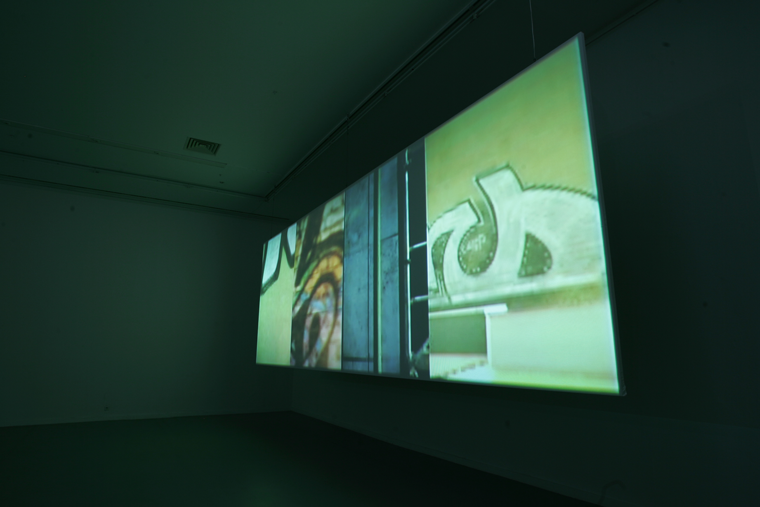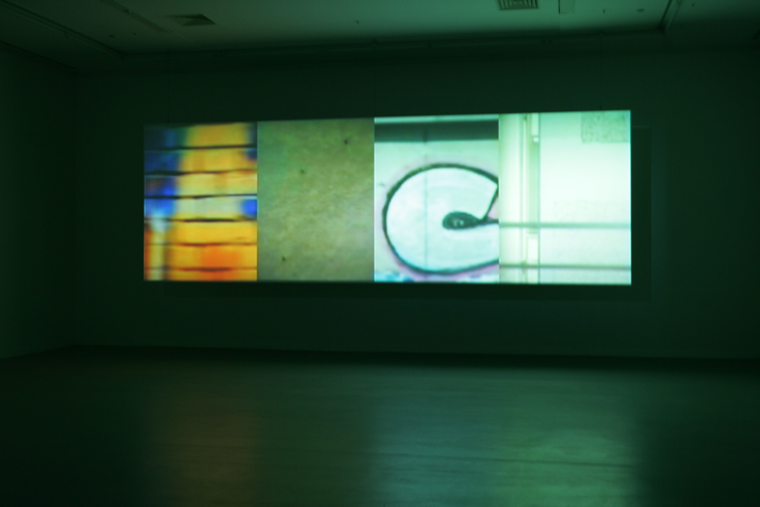You are in: works
Übergang (2004)


In Übergang, four vertical video projections are aligned next to each other forming an animated frieze of Berlin's facades on a freestanding wall in the installation. The video is recorded through the windows of the public transportation trains (S-Bahn and U-Bahn), on their course along the city’s elevated rail system. The DVD playback is unsynchronized and allow for new juxtapositions of the four video channels to occur over time. An eight-channel surround soundtrack is composed from the ambient sounds of the trains and is played back on eight speakers in the room.
"From the elevated railway, above the level of traffic and the heads of passersby, Bull.Miletic captured the façades, with windows, walls, and graffiti. People and cars are screened out. The title Übergang (Transfer) is taken from the loudspeaker voices that call out the connections at transport nodes, but also indicates the transitory character of their own existence as artists, their origins in Eastern and Western Europe, and not least their perceptions of the city of Berlin. The profane transfer from the subway, where a female voice announces the stations, to the city train, which has a male voice, cannot be all that is meant; rather, it must also be the shift from a repressed past to an uncertain future, which is more palpable here than in any other European city. Here, nothing comes to rest; The Sky Over Berlin cannot wait. The standpoint in Übergang is not an unmoving one, an ego-centric one as in the revolving restaurants, but a hectically pulsating drive forward. The buildings flash by to a sound mixed with the screeching of wheels on rails. Four projectors cast four vertical-format videos beside each other on a wall. Four quarters become an art of the fugue by shifting in relation to each other; each new loop provides different combinations of image and sound and thus produces practically endless variations of surface, color, and rhythm, without losing sight of the theme."
Boris von Brauchitsch